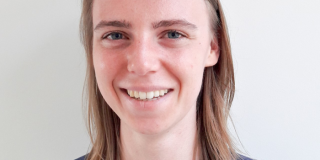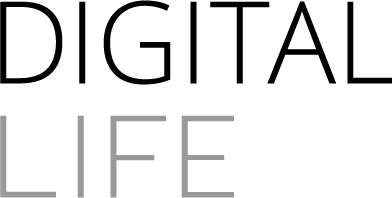Feasible and usable applications with ‘People in Movement’
05-04-2022

Lecturer-researcher Annette Brons obtained her bachelor's degree in Human Movement Sciences in 2014 at VU University Amsterdam. ‘I found the field of application very interesting. What is our musculoskeletal system like? And how do you get people moving? I was also extremely interested in the technology behind and the data analysis of movement.' That is why she opted for a Master's in Artificial Intelligence at Utrecht University. ‘I apply the techniques I learned here in the field of movement. For example, my PhD research is about the development of adaptive games for children with a chronic illness or disability. The games contain sensors that we use to map children's exercise behaviour. Machine learning – computer-controlled systems that learn from processed data – allows us to adapt the game to the level of each individual child. So that it remains stimulated and motivated.'
MAINTAIN HEALTHY BEHAVIOUR
Annette Brons is a lecturer-researcher for the Digital Life lectorate and the HBO-ICT program at the AUAS. She teaches the minor Applied Artificial Intelligence (AAI). She recently started working as a postdoc researcher at the People in Movement (Dutch: Mensen in Beweging / MiB) research theme. ‘Together we try to stimulate and maintain healthy behaviour in the field of nutrition and exercise. To achieve this, we focus on behavioral change techniques supported by creative technology. The combination of nutrition, exercise and creative technology is very important. When one of the pillars is missing, you can still help people, but it is more difficult to achieve their goal. Imagine you exercise a lot. Then you will definitely achieve results. But you achieve more when you also eat healthy.' Why is creative technology such an important part? 'Learning new behaviour is difficult for many people. Creative technology can support this. I know the possibilities and impossibilities of technology and can translate wishes and needs into technical requirements.'
CONCEPT MAPPING METHOD
At MiB, Brons focuses on writing grant applications and conducting research.
‘I am currently working on a first grant application; a follow-up to the SIMBA project. With this study we mapped out what children with asthma need to exercise more. I developed a digital tool for using the concept mapping method, which combines qualitative and quantitative research. The tool conveniently maps out how the target group thinks about a certain subject. What needs and wishes are there? Initially, the tool was only intended for this project, but other research groups from within and outside the AUAS expressed their interest. In order to use the tool more efficiently, we want to develop it further. When writing the grant application, I map out what needs to be improved and what the long-term use of the tool means for practice. If the application is approved, I will of course be involved in the implementation of the research.'
FEASIBILITY AND USEFULNESS
It is very important to Annette Brons that she and her colleagues develop products that people, both patients and healthcare providers, need. 'During the SIMBA project, we developed the Foxfit app. Children, parents and caregivers were very enthusiastic about it. The game company that helped develop it is now looking into how to market the app. I think it's great that at MIB we develop products that really benefit our target group in everyday life. Products are often tested for effectiveness first. In my opinion it is more important to test for feasibility and usability first. You can be effective with your product, but if your product does not fit your target group, it will remain on the shelf. The possibilities in technology are endless. As a researcher you can design all sorts of things. The challenge is to work well with your target group and to match their wishes and needs.'
BUILDING ON KNOWLEDGE
Towards the future, Brons at MiB would like to build on existing knowledge. ‘The same behavioral change techniques are often used in the development of an intervention. Its application differs. This requires a different form of creative technology to make the intervention fit the target group. I would like to continue to build on knowledge and techniques developed during other projects. We already do this with our modular online platform. And hopefully soon also with the further development of the concept mapping method. I think it is important that knowledge is not lost or left behind. If we can do this in collaboration with the target group, then I am satisfied.'
Source: website 'Centre of Expertise Urban Vitality

